Hisense 65U7KQTUK Review
Great value TV at an affordable price
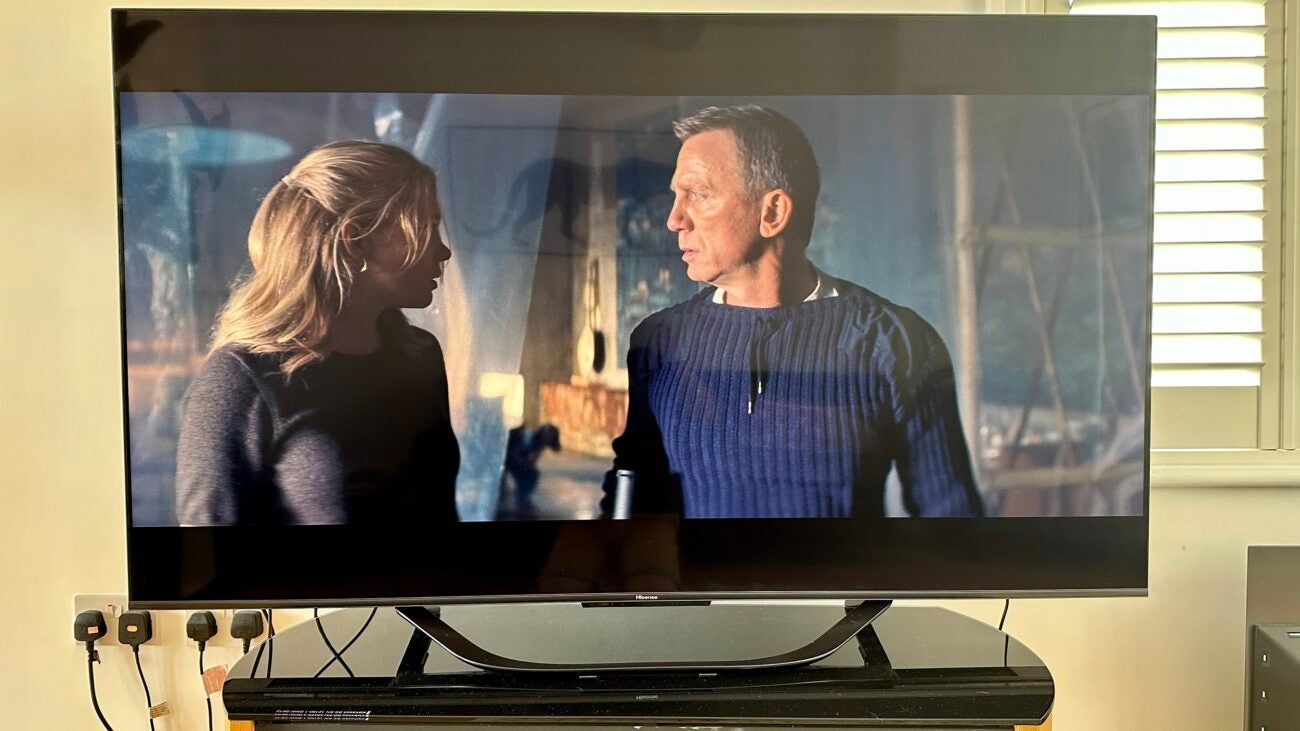
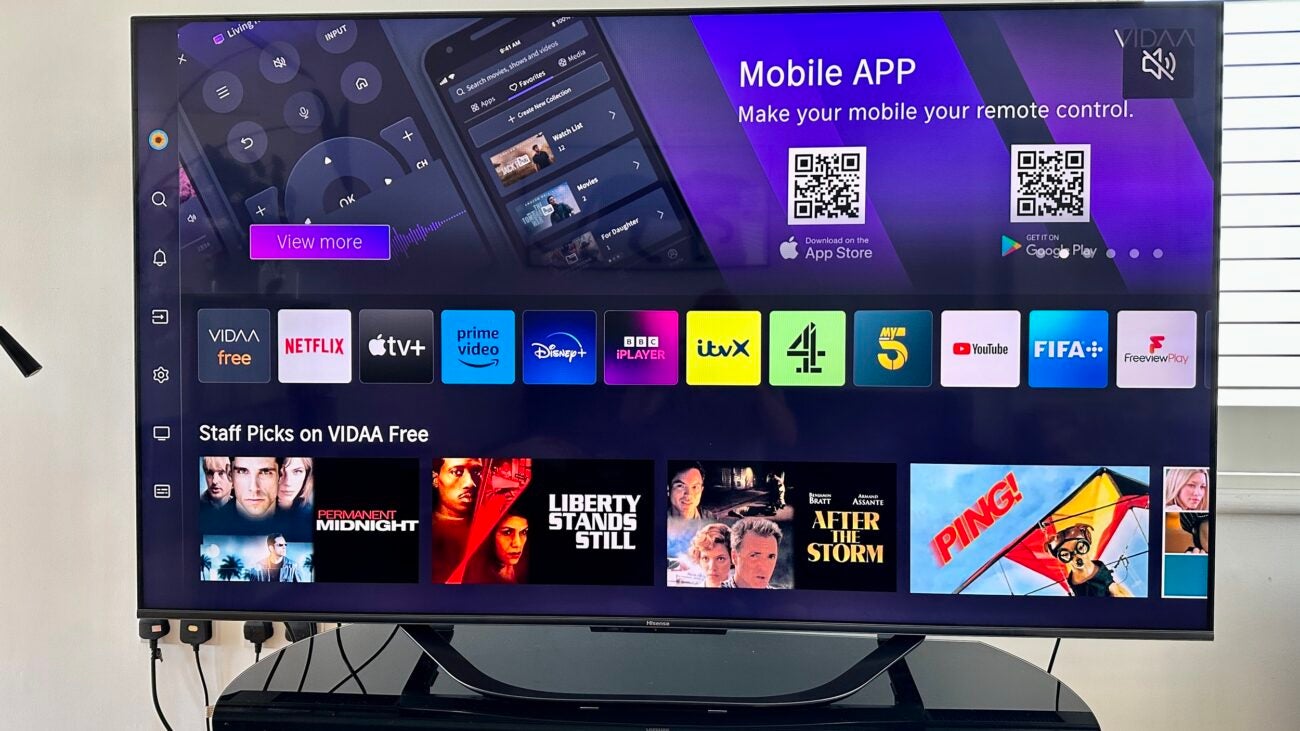

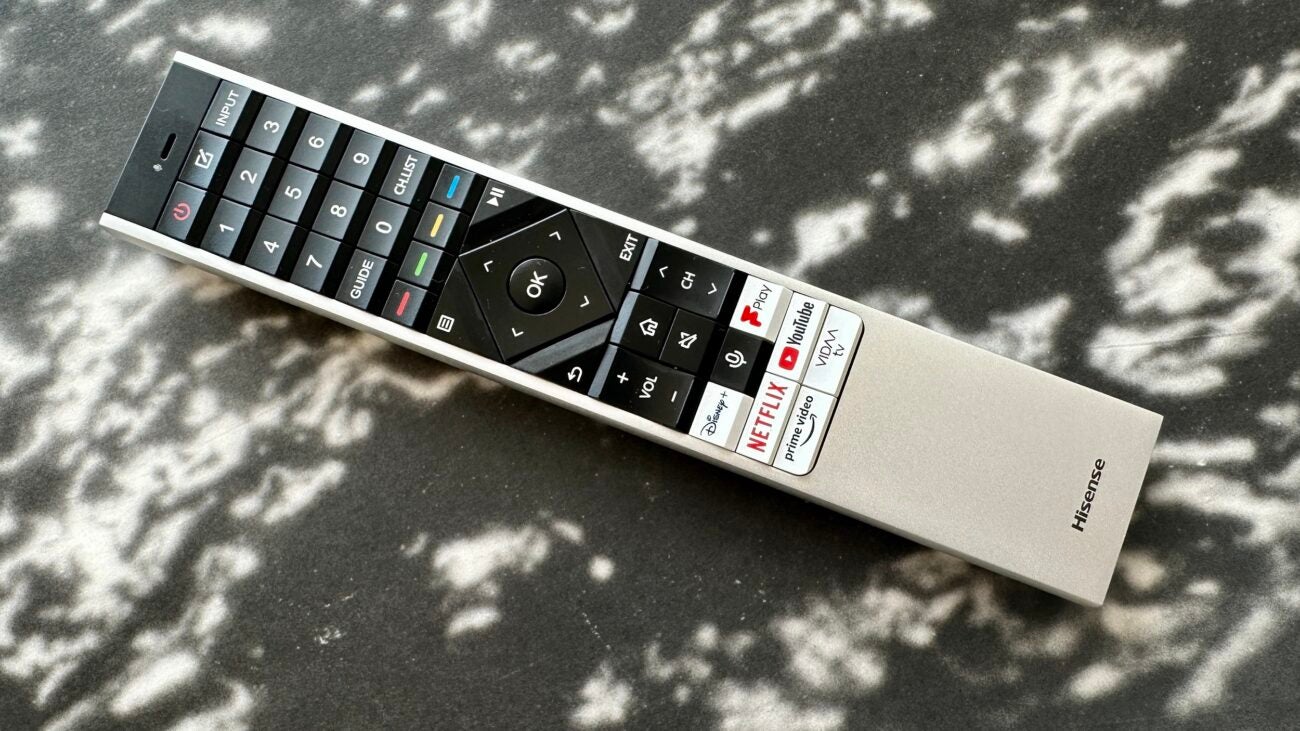

Verdict
If you want a big, well-specified television without spending what a big, well-specified television usually costs, the Hisense U7K has just what you’re after…
Pros
- Impressive specification
- Balanced, colourful and generally convincing images
- Good smart TV features
Cons
- Unremarkable sound
- Has upscaling issues
Key Features
- Screen4K ULED panel with Mini LED backlighting
- PictureDolby Vision, HDR10+ dynamic metadata, IMAX Enhanced and Filmmaker Mode certification
- Audio2.1-channel, 40-watt audio system
- Smart TVVIDAA U7 user interface
Introduction
Just because we’ve all got used to Hisense products being very aggressively priced relative to a) their specification and b) their most obvious rivals, that doesn’t make it any less notable.
You’d have to go some to find a 65-inch television as thoroughly specified as this one for less than Hisense wants for the 65U7KQTUK – so as long as it performs up to the standard of its specification rather than down to the level of its asking price, it’s going to be a winner…
Availability
The Hisense 65U7KQTUK is on sale, and in the United Kingdom it’s nominally priced at £1499 – it wouldn’t be the first Hisense TV, though, to be pretty fluid pretty early on in its lifetime where pricing is concerned. In the United States, the equivalent model (the 65U7K) is a staggeringly aggressive $1049, while in Australia it’s an equally eye-catching AU$2299.
American customers are in the box seat here, obviously – but no matter the territory in which you’re shopping, there’s a disconnect between the way this TV is specified and its asking price. Off the top of my head, I can’t think of a similarly specified alternative that doesn’t cost considerably more than this.
Design
- Metal bezels, stand and remote control
- 400 x 300mm VESA mount-compatible
- Depth: 306mm with stand, 77mm without
The bigger the TV screen, the narrower its bezels tend to appear – and in the case of the 65U7KQTUK, its aluminium bezels are very, very narrow indeed when viewed from dead ahead and only 5mm when seen in profile. So while this isn’t the ‘bezel-less’ design Hisense wants you to think it is, it’s getting there.

Build quality is very acceptable, and the materials used all feel robust – but despite this, the 65U7KQTUK weighs an unremarkable 19.7kg without its stand. It measures 77mm at its deepest, so should look reasonably tidy if you decide to wall-hang it. If you’d rather not, though, it’s supplied with a fairly elaborate ‘hoop’-style metal stand with plastic facing that a) only adds 1kg to the all-in weight, and b) doesn’t require an especially wide surface to sit on. It looks a bit like someone tried to base its design on a Möbius strip, and is all the more interesting for it.

This very pleasant design language extends to the TV’s remote control handset. It too has a metal frame, and features some very sensibly contoured buttons covering pretty much all aspects of functionality. There’s a mic for use with voice-assistance, and buttons to the likes of Netflix and Disney+.
Its spring-loaded battery compartment is a particularly nice touch. Yes, it could do with some backlighting, but in every other respect it’s one of the more upmarket remote controls you’re likely to encounter.
Features
- Every meaningful HDR standard included
- 2 x HDMI 2.1
- Control via remote handset, app or voice
Hisense TVs with Quantum Dot technology are called QLED by the company. Other TVs, like this one, are called ULED – which refers to TVs with ‘ultra-wide colour gamut’, ‘ultra local dimming’, ‘ultra 4K resolution’ and ‘ultra smooth motion rate’ – at least three of which are also offered by its QLED TVs. ULED TVs don’t always have Quantum Dot technology – this one does, but it’s not a QLED TV, it’s ULED.
It’s worth noting here that Hisense is not the only TV brand to make things difficult, apparently for the sake of it.
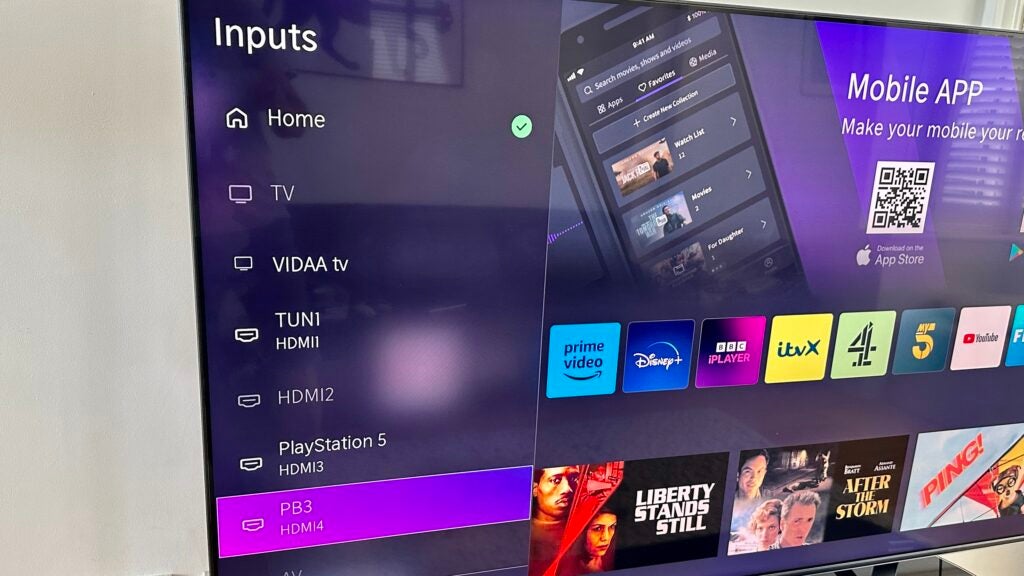
Anyway, the 65U7KQTUK is a 4K ULED TV with Quantum Dot technology, capable – so says Hisense – of reproducing over one billion colours.
The panel is backlit using Mini LEDs – many thousands of them, each one smaller than a grain of rice. The advantages of this are pretty obvious: more LEDs backlighting the panel means more individual dimming zones (almost eight times as many as the outgoing non-Mini LED U7 model, according to Hisense).
More dimming zones means greater backlighting precision, which should mean better, more convincing picture quality. The technology has certainly proved its worth in the (inevitably considerably more expensive) Mini LED TVs I’ve seen so far.
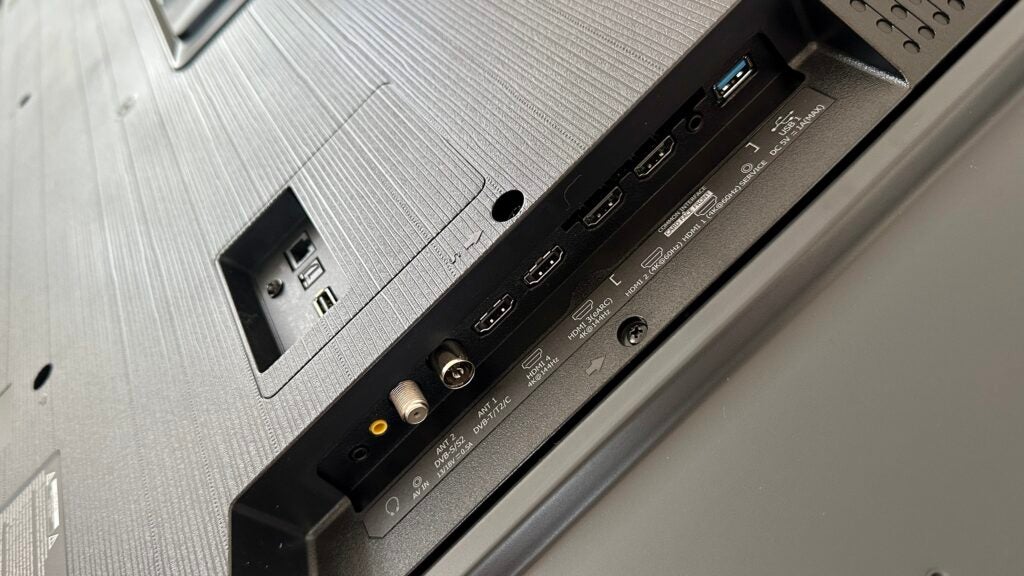
It’s a 144Hz panel, which – in theory, at least – ought to be good news for PC gamers. And half of its four HDMI inputs are rated to the 2.1 standard with 4K/144Hz, AMD FreeSync Premium, ALLM and VRR capability. One of them is eARC-enabled, too.
Other physical connections run to an Ethernet socket, composite video via 3.5mm input, a pair of USB-A slots (one 3.0, the other 2.0), a digital optical output and a 3.5mm headphone output. There are a couple of aerial posts for use with the integrated TV tuners. Wireless is taken care of by Bluetooth 5.0 and Wi-Fi 6.

The Hisense uses the company’s proprietary VIDAA smart TV platform, here in its ‘U7’ guise. It covers the whole screen, which is seldom a good idea, but it’s fully loaded with catch-up and streaming service apps of lesser or greater importance – and they’re all the best version of themselves, too, which is handy.
It’s simple enough to rearrange apps according to preference, and the algorithms don’t take too long to start recommending stuff you might actually be interested in watching. And the VIDAA Free channel has some worthwhile stuff in amongst the dross, too – I was certainly pleased to be served The Limey during the course of this test.
Navigating the smart TV interface (and the brief, to-the-point set-up menus too) can be done using the nice remote control handset, of course, or you may prefer to use the (brief, to-the-point) VIDAA control app that’s free for iOS and Android. And there’s the option of voice control using either Amazon Alexa or VIDAA Voice – there’s a ‘mic’ button on the remote and on the control app, as well as a defeatable mic built into the frame of the TV itself.
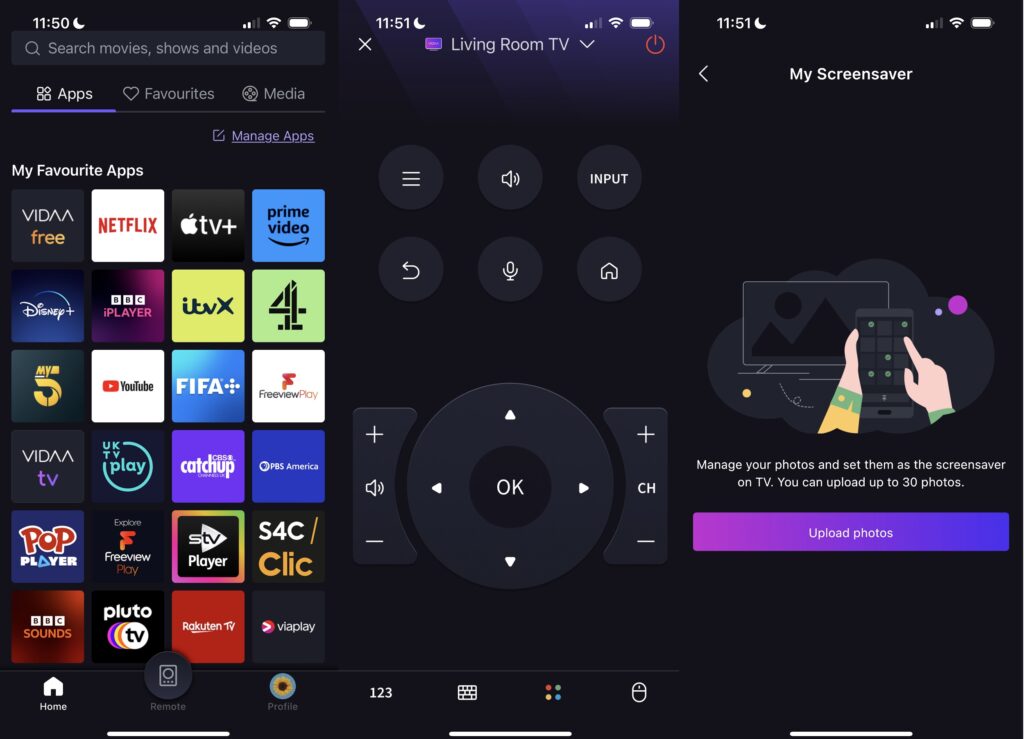
What else? Well, the 65U7KQTUK is TÜV Rheinland-certified for low blue-light emissions. Hisense has incorporated a ‘Game Bar’ that allows gamers to access a lot of relevant information without having to exit the game they’re playing in order to do so. And the integrated Freeview Play has an ‘8-day forwards/7-day backwards’ EPG.
So yes, as I may have already mentioned: this is a specification that’s out of proportion to the asking price.
Picture Quality
- Lovely 4K HDR picture quality
- Colourful, high-contrast images from all sources
- Upscaling has its limits
The Hisense is compatible with each and every worthwhile HDR standard, with particular highlights being HDR10+ Adaptive and Dolby Vision IQ. It’s IMAX Enhanced-certified, and also has Filmmaker mode on board.
The ‘Hi-View’ quad-core processing engine takes care of business – it incorporates some AI elements to optimise both audio and video performance in real time and is supposedly capable of upscaling less information-rich content to what Hisense calls ‘a 4K-quality image’.
It hardly needs overstating the Hisense 65U7KQTUK does its best work with some native 4K content, ideally with an HDR element to it. Give it something appropriate – a UHD Blu-ray disc of No Time to Die with Dolby Vision and Dolby Atmos enhancement, or HDR10-assisted Gran Turismo 7 via a PlayStation 5, for instance – and the Hisense is capable of very convincing and complete image-making.
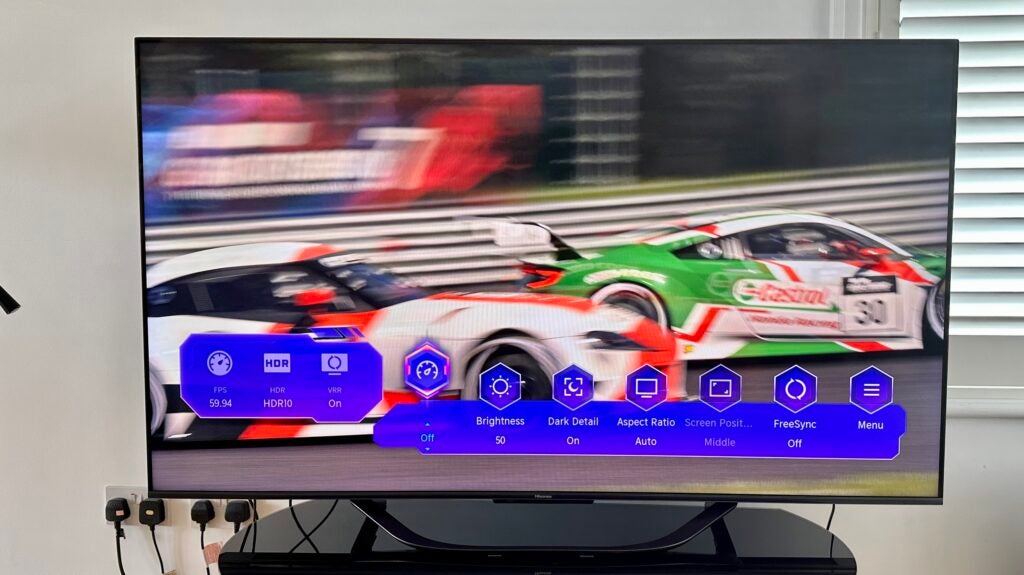
Its Quantum Dot-assisted colour palette is very extensive, and there are numerous very subtle variations in tone and colour volume made apparent. Skin-tones, especially, enjoy plenty of variety, and the rest of the palette is generally pretty vibrant without ever becoming overblown or unnatural. Black tones are respectably deep by the standards of LCD panels and are just as detailed and varied as the colours occurring above them – certainly there’s no crushing of blacks, even in predominantly dark scenes.
And the white the Hisense creates are reasonably punchy, always clean and, again, plentifully detailed. Contrasts are strong even though the 65U7KQTUK isn’t the out-and-out brightest screen around, and the Mini LED backlighting proves its worth both in how even and consistent it is, and in its ability to illuminates little patches of light in otherwise-dark scenes without any overt haloing or blooming. Console games, in particular, enjoy glowing lighting effects that add both depth and nuance to images.
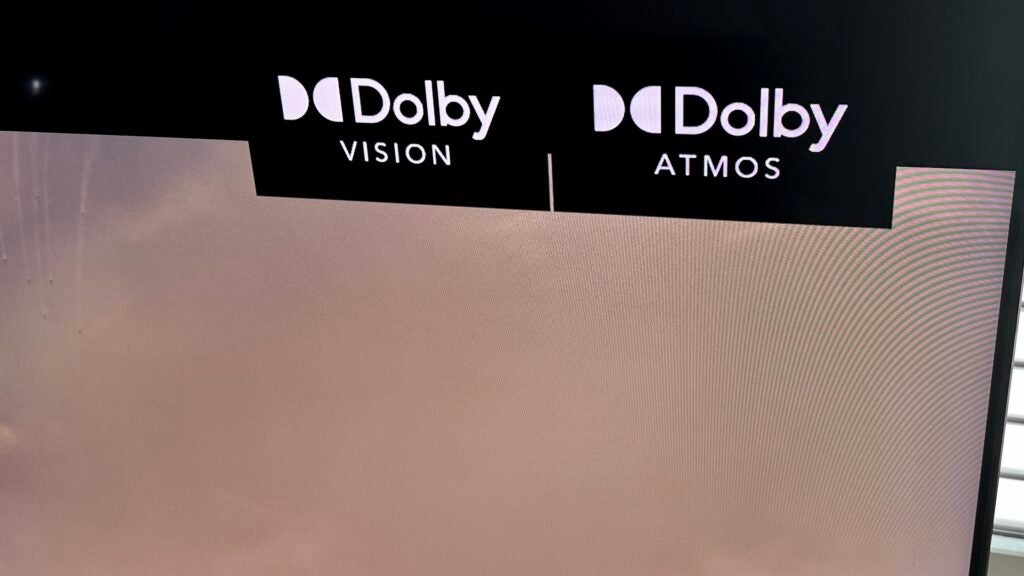
The Hisense keeps edges nice and stable, even when there’s considerable depth of field to an image, and this lets it keep proper control of even quite tight and/or complex patterns. It’s stability to on-screen motion, too – even if you watch some televised sport, where on-screen movement is rapid, unpredictable, and quite often in opposition to camera movement, the 65U7KQTUK guards against juddering or smearing very effectively. Or, at least, it does if the sport you’re watching is being streamed in 4K.
Switch to some lower-resolution content and, up to a point, the 65U7KQTUK proves a perfectly competent upscaler. 1080p stuff is decently detailed and defined, and if there’s a slight lessening of certainty where edge-definition and depth of field in particular are concerned, it’s a) predictable, and b) no impediment to your viewing pleasure.
Step down from Full HD stuff, though, and the Hisense throws the towel in somewhat. A big screen like this displaying some 720p content or less is always going to struggle, and the 65U7KQTUK lets picture-noise intrude, lets detail go astray and gives up entirely where testing on-screen motion is concerned.
Sound Quality
- Quite eloquent midrange reproduction
- Flat, undynamic overall sound
- Tentative bass presence
The audio system itself is a 2.1-channel arrangement fed by a total of 40 watts of power. Two full-range drivers face forwards, while there’s a low-frequency driver (helpfully labelled subwoofer) on the rear of the chassis. The 65U7KQTUK is compatible with Dolby Atmos, at least insofar as it can understand and deliver a stereo interpretation of a Dolby Atmos soundtrack.
It’s not in any way actively poor, you understand – but after the excitement and enjoyment of the Hisense’s picture quality, the sound it makes brings me back to Earth with a bit of a bump. Despite it being so pleased about the presence of a subwoofer, the 65U7KQTUK doesn’t dig especially deep into the frequency range – and the low frequencies it does generate are rather tentative and short of substance.
There’s plenty of clarity and no shortage of detail through the midrange, though, and the top of the frequency range is quite sensibly rolled off – this way, you can play reasonably loud with treble sounds attempting to take your head off.
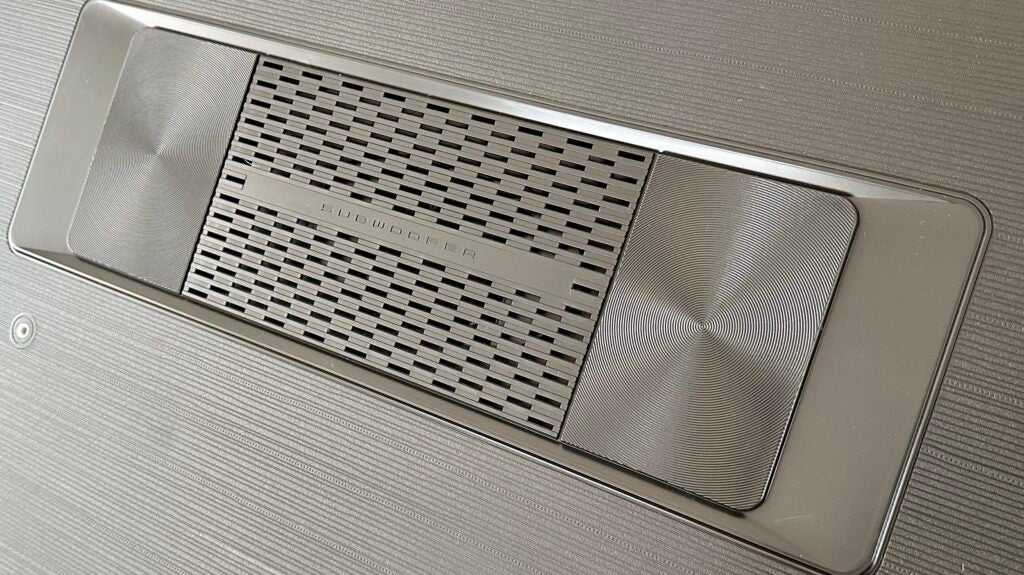
The sound the Hisense makes is quite direct, and quite directional – it doesn’t attempt to sound any bigger than the chassis from which it comes. And despite being quite articulate with voices, it’s not especially dynamic – there’s a set level of intensity at which everything occurs, and it seems impossible to shift the 65U7KQTUK from there no matter how the on-screen action might be kicking off.
Really, a TV as capable as this one where picture quality is concerned deserves – demands, even – you find some space in your budget for an appropriate soundbar. It’s not like you’re short of choice.
Latest deals
Should you buy it?
You know a bit of a bargain when you see one: In action just as much as on paper, this television outperforms its asking price. At least as far as images are concerned, anyway.
You’re with George Lucas where the audio/video ratio is concerned: Safe to say sound isn’t 50 percent of the Hisense 65U7KQTUK experience.
Final Thoughts
You can never really know what sort of Hisense product you’re getting until it’s up and running – and previous experience told me that disappointment was every bit as likely as enjoyment. It didn’t take long for the Hisense 65U7KQTUK to convince me of its qualities, though, and I doubt you’ll take long to be persuaded either
How we test
We test every television we review thoroughly over an extended period of time. We use industry standard tests to compare features properly. We’ll always tell you what we find. We never, ever, accept money to review a product.
Find out more about how we test in our ethics policy.
Tested for more than a week
Tested with real world use
FAQs
The Hisense U7K is compatible with HDR10+, HDR10, HLG, and Dolby Vision HDR formats.








